Have you ever taken a cake out of the oven that looked perfect, only to find it’s dense enough to use as a doorstop? Yep, I’ve been there too.
That’s when I asked the big question: Which ingredient makes cake soft and fluffy?
Spoiler alert: it’s not unicorn dust or just your hopes and dreams (though those help too).
The secret is in a few key ingredients, but one stands out—baking powder. That little white powder does all the heavy lifting.
Now, let’s dive into the science of fluff!
Baking Powder: The MVP of Fluffiness
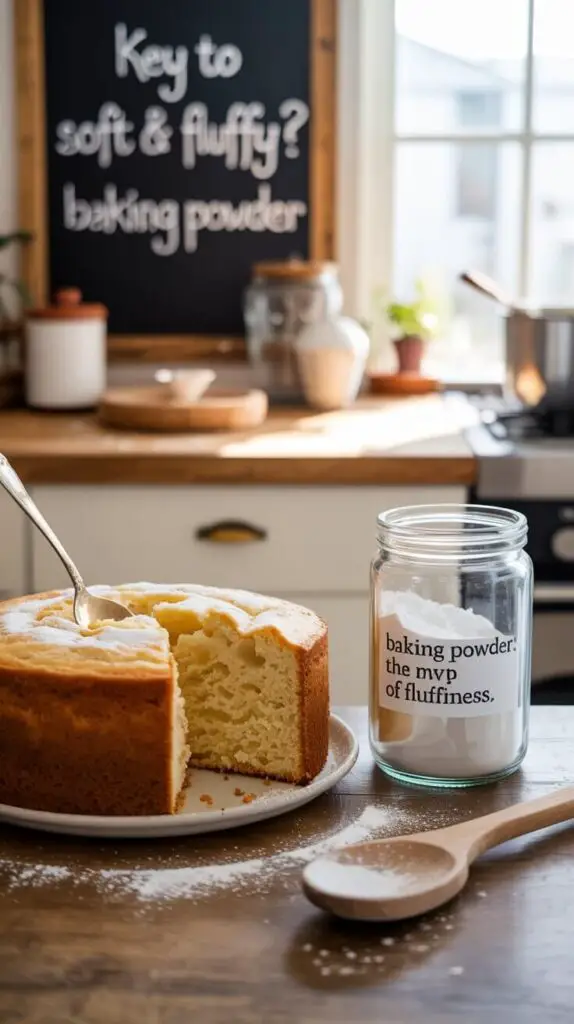
You probably saw this coming. Baking powder is the #1 ingredient responsible for that soft, airy texture we all obsess over.
Why? Because it creates carbon dioxide gas when it reacts with moisture and heat. That gas expands in the oven, puffing up your cake like a tiny edible balloon. 🎈
Here’s why baking powder rocks:
- Leavening magic: It adds lift, making the batter rise.
- Uniform texture: Helps create that tender crumb we all love.
- Double-acting goodness: Most baking powders react twice—once when mixed, and again when heated.
But heads-up: Too much baking powder = weird taste + volcano-style overflow. Trust me, I learned that the hard way… and spent an hour scrubbing my oven.
Eggs: Not Just for Breakfast Anymore
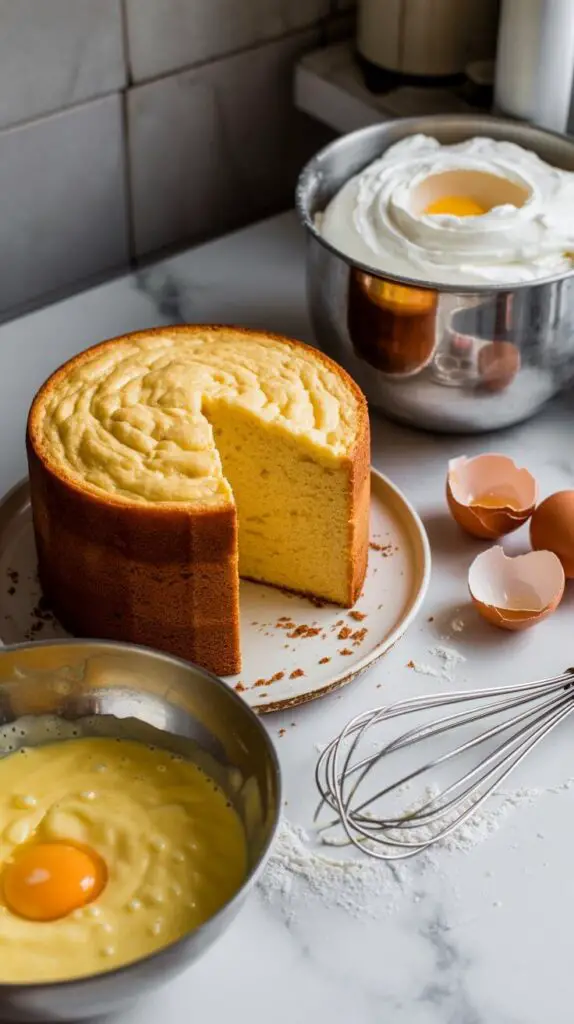
Eggs are the unsung heroes in your cake batter. Sure, they seem basic, but they bring structure AND softness to the table.
What eggs do for your cake:
- Whites = air: Whipped egg whites trap air, making the cake fluffy.
- Yolks = richness: They add fat and moisture, which helps with softness.
- Protein = structure: Keeps the cake from collapsing like a Jenga tower.
Ever whipped egg whites until they form peaks? That’s basically cake scaffolding right there. IMO, eggs deserve way more credit in the fluff game.
Butter vs. Oil: The Moisture Smackdown
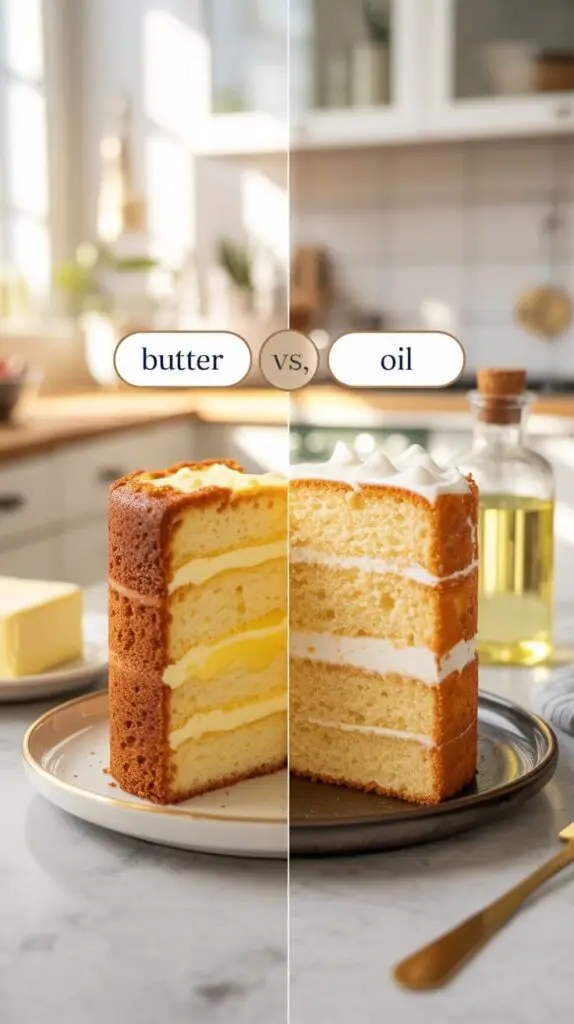
Let’s settle this debate once and for all—does butter or oil make a softer cake?
Drumroll… Oil wins. Yeah, I know, butter smells better and gives you that rich flavor. But when it comes to softness and moisture? Oil dominates.
Why oil is the softness queen:
- Liquid at room temp: Keeps the cake moist even after it cools.
- More uniform crumb: Leads to smoother texture overall.
- Less evaporation: Retains more moisture while baking.
So if you’re going for super soft and fluffy, ditch the butter or go halfsies with oil. Your future self (and taste buds) will thank you.
Sugar: More Than Just Sweetness
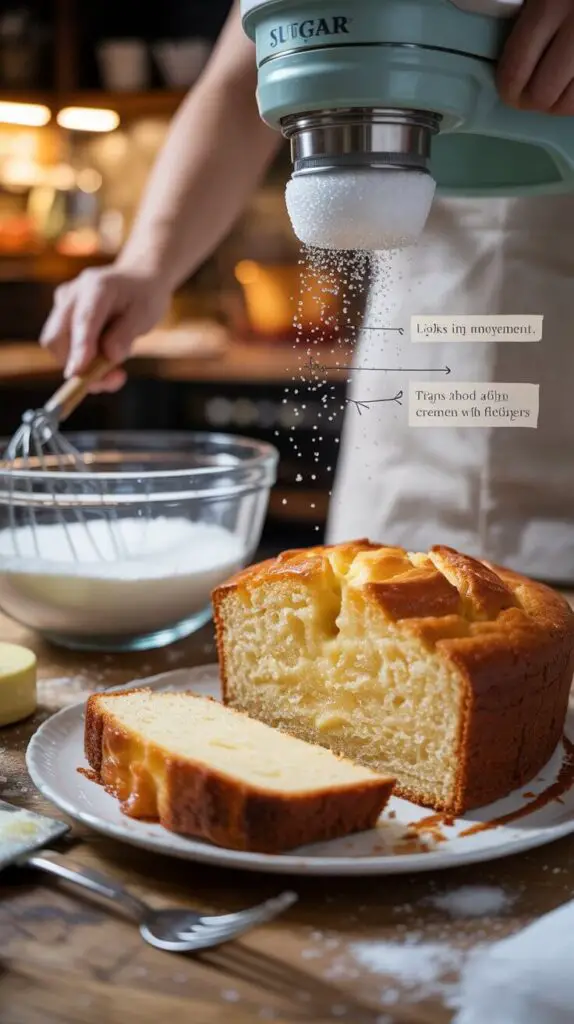
Sugar isn’t just there to rot your teeth and make you happy—it actually plays a key role in cake fluffiness.
Here’s the deal: sugar tenderizes the batter by preventing too much gluten from forming. Less gluten = softer cake. Simple math, right?
Sweet perks of sugar:
- Locks in moisture: Keeps the crumb soft.
- Caramelizes in the oven: Adds flavor and helps with browning.
- Beats with butter/eggs to trap air: More air = more rise = fluffier cake.
Pro tip: Creaming sugar and butter for a good 3-5 minutes makes a world of difference. It’s like fluffiness insurance.
Buttermilk & Yogurt: The Secret Weapons
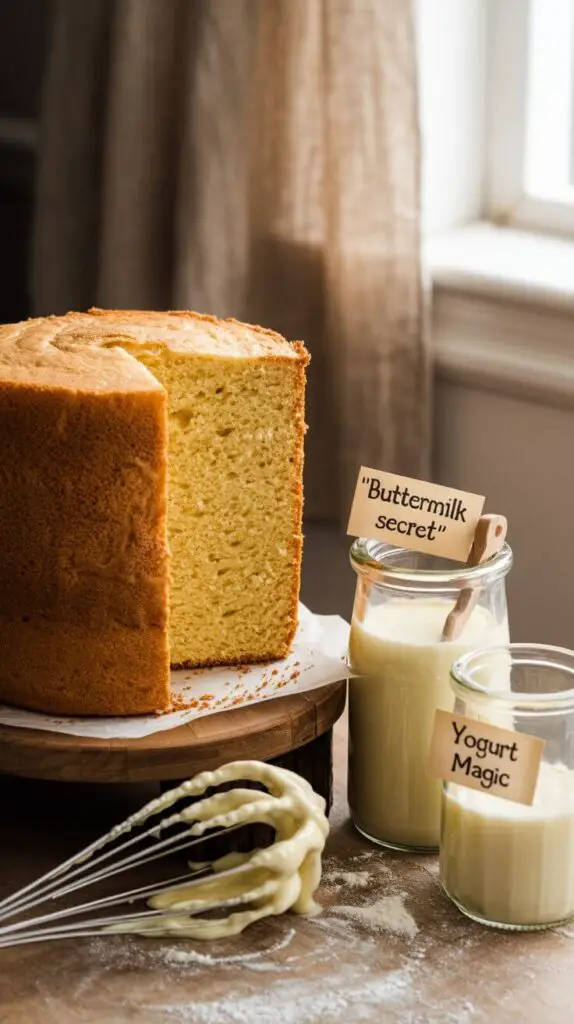
Okay, here’s where we go a little “insider baker tips” on you. Buttermilk and yogurt are absolute game changers when it comes to texture.
They’re acidic, which sounds scary, but they actually:
- React with baking soda/powder: That boosts leavening.
- Break down gluten: Softer structure, FTW.
- Add richness: Tangy, creamy, delicious richness.
Ever had a cake that tastes like it was baked in a Parisian bakery even though it came from your sad little kitchen? Yeah, they probably used buttermilk.
Flour Type: Don’t Just Grab Whatever’s in the Pantry
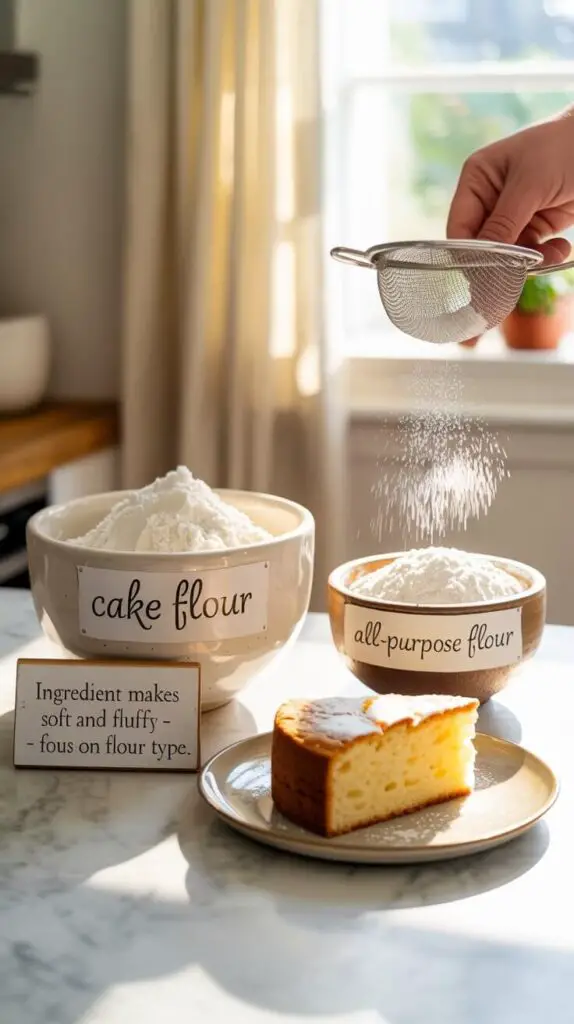
Flour may seem boring, but trust me, it’s got major impact on fluffiness. Cake flour > all-purpose flour when it comes to soft and tender cakes.
Why? It’s all about protein.
Quick flour breakdown:
- Cake flour: Low protein = less gluten = softer texture
- All-purpose flour: More protein = more structure (aka denser cake)
FYI: If you don’t have cake flour, you can fake it. Just remove 2 tbsp of AP flour per cup and replace it with cornstarch. Mix well. Boom—DIY cake flour hack 🙂
Mixing: Don’t Overdo It (Seriously, Stop Stirring)
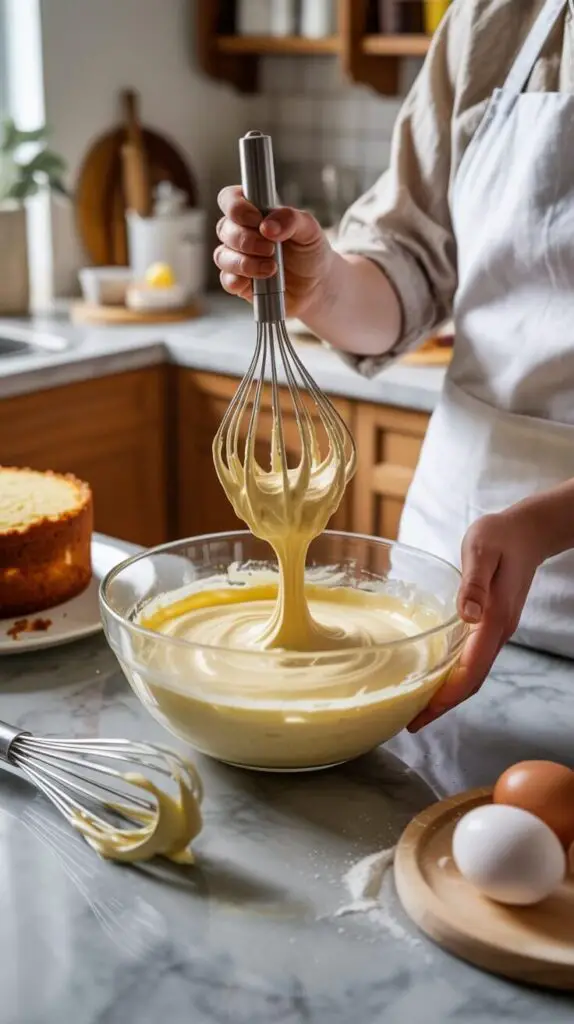
This part? Absolutely crucial. Even if your ingredients are A+, overmixing can still ruin your fluffy dreams.
Too much mixing = too much gluten = tough, chewy cake. Not fun.
Follow these golden mixing rules:
- Mix wet and dry ingredients separately first.
- Combine gently—just until everything is incorporated.
- Stop the moment the batter looks smooth.
I used to think I needed to beat the batter like it owed me money. Rookie mistake. Now I know: gentle = fluffy. Always.
Room Temperature Everything
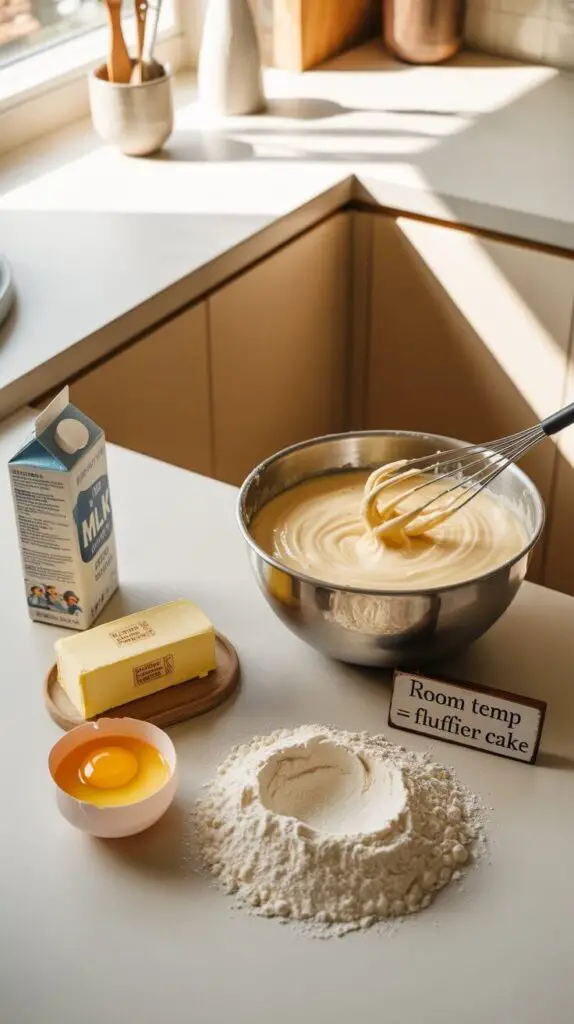
Cold eggs? Cold butter? Ice-cold milk straight from the fridge? Yeah, no. Don’t do that.
Room temperature ingredients mix better. Period.
Why this matters:
- Even mixing: Fewer lumps = better rise.
- More air gets trapped: Fluff level: MAX
- Consistent baking: No weird dense spots
So, unless you’re baking in an igloo, let your ingredients chill out on the counter first. No shortcuts here.
Oven Behavior: Don’t Be That Person

Look, even the fluffiest batter can’t save you from an unreliable oven. Temperature matters—a LOT.
Too hot? The cake rises too fast, then collapses like your last attempt at a New Year’s resolution. Too cool? You get a sad, dense pancake pretending to be a cake.
Oven dos and don’ts:
- Always preheat: Duh.
- Use an oven thermometer: Your dial might lie.
- Don’t open the door mid-bake: You’re letting out heat AND air.
Unless you want a cake with commitment issues (rising and falling all over the place), treat your oven with respect.
Recap: The Cake Softness Cheat Sheet
Let’s bring it all home. If you want that melt-in-your-mouth softness and pillowy fluffiness, here’s your go-to checklist:
- Baking Powder = Rise and fluff
- Eggs (especially whipped whites) = Structure + air
- Oil = Long-lasting softness
- Sugar = Moisture + tenderness
- Buttermilk/Yogurt = Acid magic + richness
- Cake Flour = Less protein, more tenderness
- Proper Mixing = No over-stirring allowed
- Room Temp Ingredients = Happy batter
- Oven Discipline = Preheat and chill with the peeking
Nail those, and you’re basically a cake wizard. 🪄
Final Thoughts: Fluff Happens (If You Let It)
Honestly, making soft and fluffy cake isn’t rocket science. But it is a bit of baking science—with a touch of patience and maybe a splash of trial-and-error.
My advice? Don’t be afraid to mess up a little. Some of my best cakes came after absolute disasters (RIP to the chocolate rock of 2022).
So next time someone asks, “Which ingredient makes cake soft and fluffy?”—hit them with the truth: It’s a team effort. But baking powder’s definitely the captain of the squad.
Now go whip up a fluffy masterpiece—and maybe send me a slice? 😉
